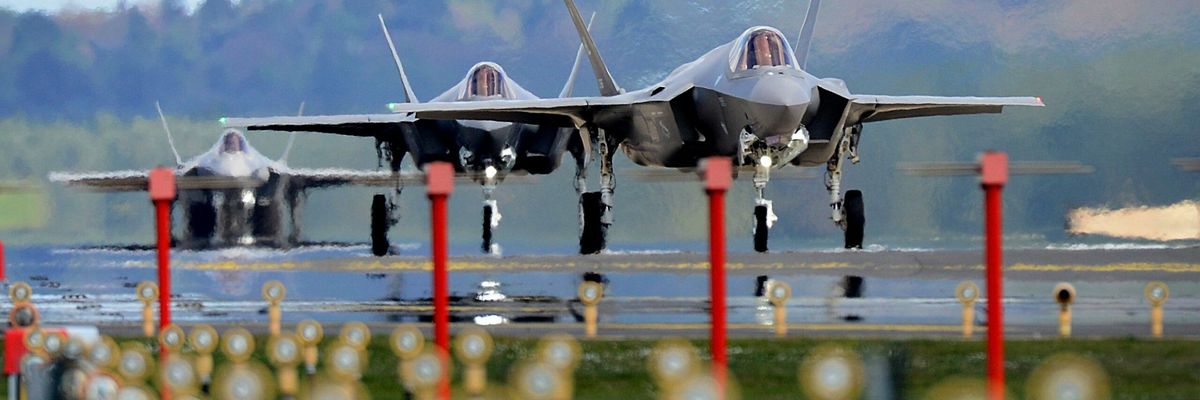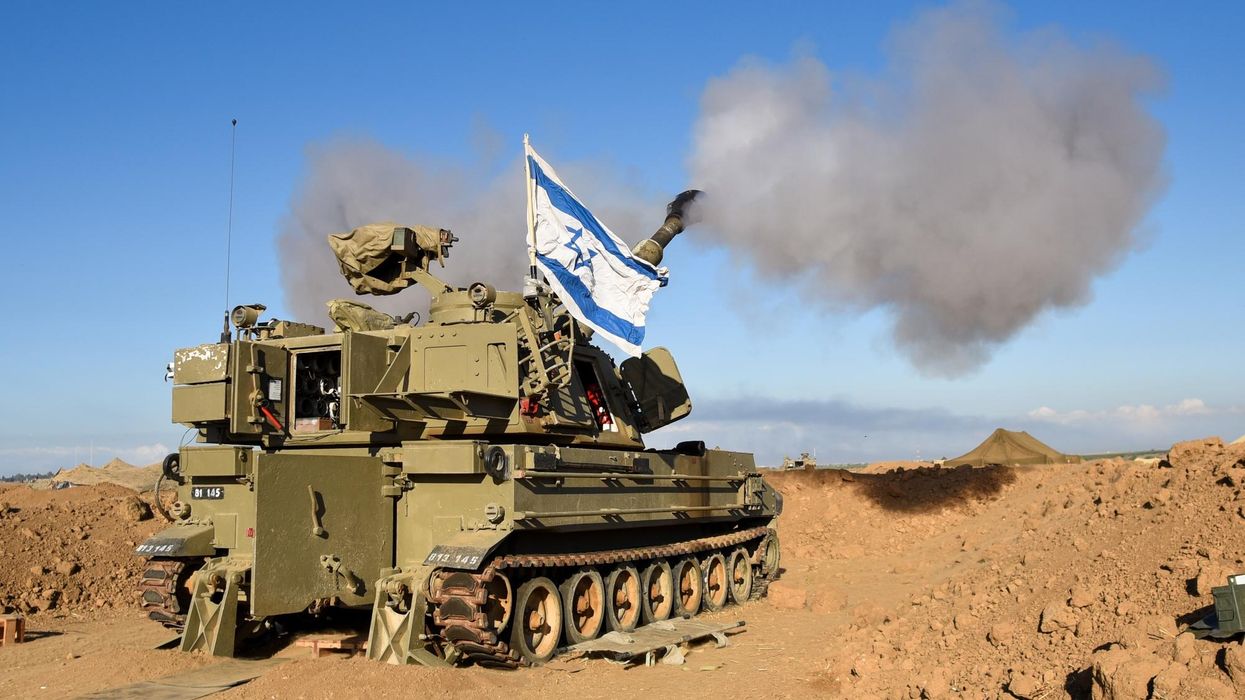The Russian invasion of Ukraine prompted several U.S. government reactions from sanctions, a ban on Russian oil imports, and a large increase in military aid to Ukraine. It remains to be seen exactly what effect these measures will have on the outcome of the war. None of it is likely to alleviate the suffering of the Ukrainian people in the short term.
But one gesture, sending a handful of F-35s to Eastern Europe, is highly unlikely to convince the Russians to change course.
President Biden has ordered six U.S. Air Force F-35s stationed Germany to NATO’s eastern flank. The F-35s will be joining 24 F-15s and F-16s which are also being sent to the region. The F-35s will be split up at bases in Estonia, Lithuania, and Romania for the foreseeable future. The commander of U.S. Air Forces in Europe said the deployment “enhances our defensive posture and amplifies the Alliance’s interoperability.”
A half-dozen aircraft of any type are unlikely to alter the strategic calculus of any country, to say nothing of Russia. Even if the F-35 could do everything the program’s boosters say it can, six F-35s could carry a total of 12 bombs in a stealth configuration, which would be necessary in the face of the Russian mobile S-400 surface-to-air missile systems.
Unfortunately, the F-35 is far from being the dominate force its partisans claim. Details of the F-35’s performance were recently revealed when I managed to obtain a copy of the “controlled unclassified information” version of the Director, Operational Test and Evaluation’s annual report, which showed that the program is performing far below expectations.
For one thing, the F-35 fleet can’t fly as often as it should even though F-35 program officials already set unusually low availability standards. The F-35 fleet managed an average availability rate of 61 percent last year, four points below the program’s low-bar goal. An effective aircraft program will be able to meet a standard of 75 to 80 percent mission capable rate. Several factors contribute to the F-35’s woes. The aircraft breaks down more often than anticipated, so replacement parts and spare engines are in short supply. The unexpected maintenance burdens have outstripped the capacity of technicians and the maintenance depots.
Lockheed Martin won the Joint Strike Fighter competition in October 2001. That means that the F-35 has been in development for more than 20 years already. During that time, more than $62.5 billion has been spent on the program in research and development alone. Despite all that time and resources, the F-35 remains an underdeveloped aircraft. It will still take years to complete the design during a process program officials have dubbed “modernization” but is really a second chance to finish work that should have been completed during the initial development effort.
The testing report showed that engineers are still trying to correct 845 design flaws. Their challenge is compounded by the fact that new problems are discovered almost as fast as the known flaws are fixed. Many of these “deficiencies,” as the Pentagon prefers to call them, have to do with cyber vulnerabilities. The F-35 used to be frequently described as a “flying computer,” although that happens rarely today. The reason is simple: one of the aircraft’s biggest weaknesses is its vulnerability to cyberattacks. Three testing directors in a row have warned about the hacking danger, but many of their concerns have yet to be fixed.
No one is even sure if the F-35 can operate in the kind of high-threat environment Russian forces have established in Ukraine. Program boosters claim the aircraft’s stealth capabilities will allow it to operate in the face of modern air defenses, but the services and their industry partners haven’t been able to even develop the testing platform necessary to prove it. Program officials have known since the very beginning they would need a fully validated and verified simulation facility to test the F-35’s ability to penetrate enemy airspace.
Program leaders included development of the testing simulator to Lockheed Martin as part of the original F-35 development contract. That meant the Pentagon tasked the prime contractor to design and build the facility that would be used to confirm that the contractor had delivered an effective product. It was like telling a student to write their own exam. Unsurprisingly, Lockheed Martin dragged its feet and failed to develop a usable testing simulator.
The Navy took up the project in 2015 but has so far been unable to complete the software programming necessary to fully replicate the F-35’s demonstrated performance in real-world flight tests. The F-35 program executive officer announced recently that the Navy’s Joint Simulation Environment will not be ready to conduct the remaining tests necessary for a full rate production decision until the summer of 2023. Should the F-35s currently in Eastern Europe be pressed into service, their first significant operational test will be over a two-way firing range and no one really knows how they will work.
After more than two weeks of combat in Ukraine, air power hasn’t played as much of a part in the conflict as many people expected. The absence of a massive Russian air campaign has prompted headlines like “The curious case of Russia’s missing air force.” For those whose careers and livelihoods depend on making people believe that airpower is the sine qua non of any military operation, the so far unimpressive Russian aerial demonstration is understandably distressing. It is difficult to make the case that the United States needs to bankrupt itself by spending $1.7 trillion to purchase and operate a fleet of F-35s when one of the giants it is designed to slay turns out to be a less than average mortal.
















